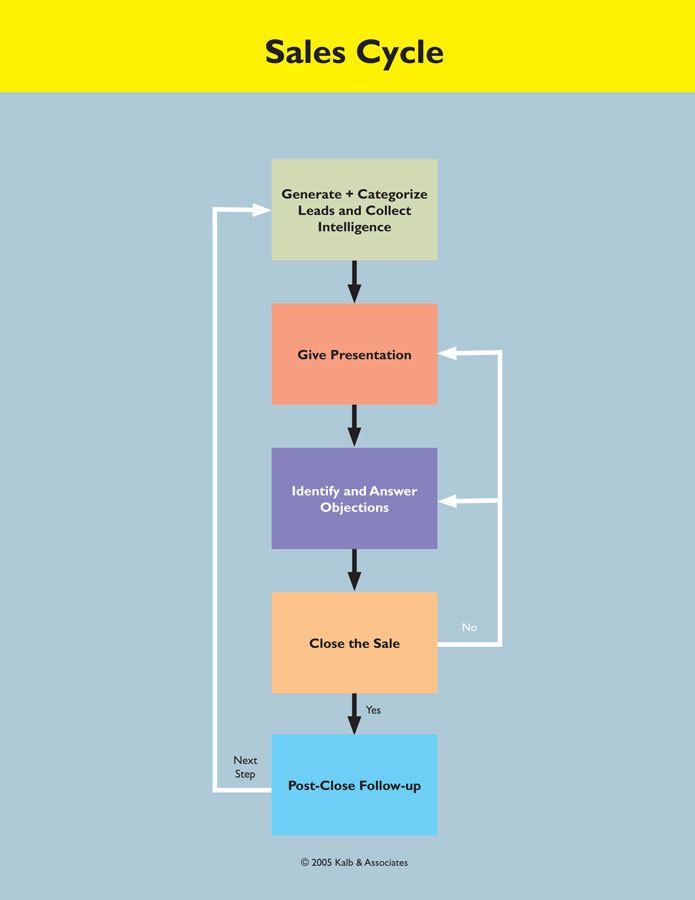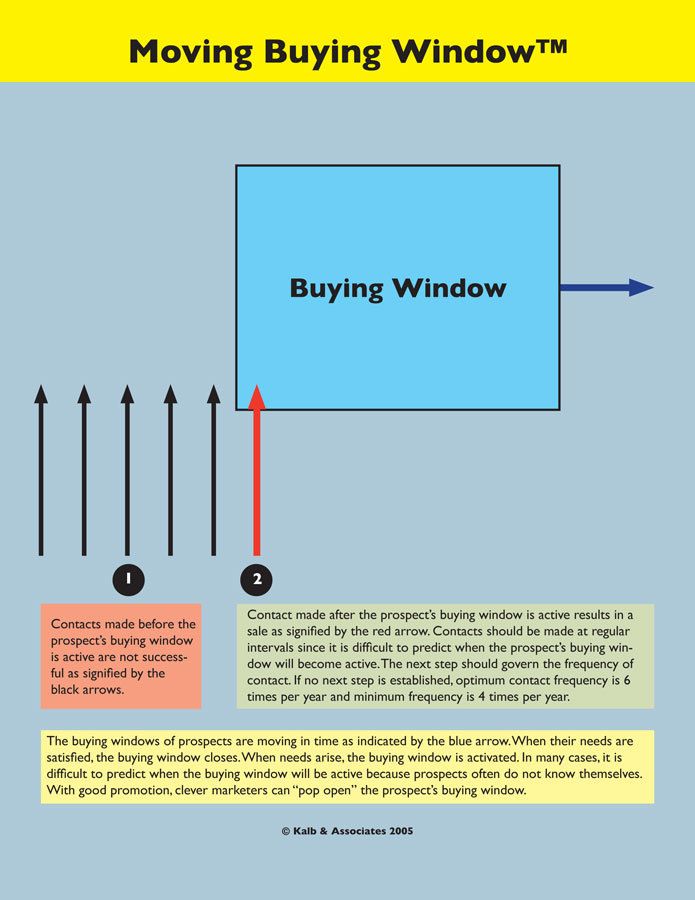
Every company with which I have been affiliated has left money on the table because it had sales people that did not know how to properly “work” leads. If sales people did not meet their quotas, they blamed the company’s marketing communications. In fact, in too many companies, the sales people blame the marketing people and vice versa for less than stellar performance. While perhaps both should share the blame, this post focuses on helping the sales people do a better job of working leads.
Brief story
In the mid-1990’s, I was hired to help an organization that did manufacturing consulting get more business. It was just after a recession, and many of the consultants had lost their jobs with aerospace companies. They were wandering the halls worrying about being laid-off again because this company did not have enough work to go around. I was introduced to the person that was performing the sales function. As soon as I met him, I could see one of the problems. He never learned how to properly sell. He had a box of leads on a shelf in his office that was labeled Dead Leads. I asked him to tell me what a dead lead is. He equated dead leads with uninterested prospects. He obviously did not know that a prospect is someone that at some point in the sales cycle expressed interest in the company’s products. If the prospect is no longer interested, perhaps the sales people could have done better. And, if the prospect is not interested now, perhaps they could become interested again later as new products are developed or the prospect’s situation changes.
I could not fault this poor guy because I knew that so many sales trainers teach people to qualify leads. They use the word “qualify” as a euphemism for discarding leads that are “unworthy” of further attention. Because I know significant value can be hidden in leads, I train sales people to categorize rather than qualify them. If they do, they have the opportunity to mine the considerable value that may be locked inside.
Categorize rather than qualify
Effective sales people that also understand marketing strategy know there is value in each and every lead. After all, companies spend a lot of money to generate leads, and leads contain important information on prospects that, at some point in time, expressed interest in the products they are selling. If they weren’t interested at some level, why would they waste their time to contact you and provide you with their contact information? They wouldn’t (unless they were a competitor with an ulterior motive). Rather than discard leads, it’s best to categorize them into three levels of interest. Because temperature is often used as a metaphor for degree of interest, leads are typically categorized into...
- Hot for the most interested leads (H),
- Warm for a medium level of interest (W), and
- Cool for the least interested (C) - notice I don’t say “cold” since that is equivalent to “dead.”
Since most sales trainers teach you to discard the “C” leads, it is useful to understand some of the many reasons why you shouldn’t.
Important reasons to keep the “C” leads
As good sales people know, when you categorize leads, you are often guessing at the degree of interest. According to some statistics, roughly 85% of sales people will typically discard leads if there is no response after three follow-up contacts. According to a McGraw-Hill study it takes 4.3 contacts to close a sale. Since you cannot make a fraction of a contact, the real number is 5 contacts. As you can see, most people that call themselves sales people will not even get to that point. Here are four reasons not to discard “C” leads.
1. Good sales people can move them up to a higher category. When you make a judgment as to the degree of interest, it is a guesstimate. If you know how to sell, you can take a prospect at whatever degree of interest and move them up to a higher level.
2. Moving Buying Window.™ When prospect’s are interested in buying a product, their buying window opens. Since it is nearly impossible for you, or even they, to predict when they will be ready to buy, you need to make multiple contacts to be sure to contact them when their buying window is open. As discussed above, too many sales people will stop contacting a prospect after two or three unreturned contacts. They don’t understand that buying windows move in time as well as open and close.

3. Sales Army.™ Good sales people look at every contact as either a potential customer or a referral source. Even if “C” leads never buy from you, if you develop relationships with them, they will refer others they know that might be interested in buying.
4. Database value. Leads might be “C” leads to you and “H” leads to someone else. In any case, every lead in your database has value, and there are companies that are willing to rent your database. Databases are rented on the open market for a wide range of CPM’s (the industry term for cost to reach 1,000 prospects). According to Monetize Pros, the average CPM for dedicated email ranges from $77 to $120. When a client wanted to rent a mailing list of subscribers to AOL years ago, the CPM was $106. A one-time rental of this database would bring in $6 million in revenue! Even though these values fluctuate over time, each lead in your database has a definite value. Why would anyone in his or her right mind discard it?
Information importance
With the value of information going up as societies transform to an information and automation focus, it would make sense for all companies to realize that there is real value in each and every lead. Those that understand this point should make sure to do the following:
1. Capture every contact. Every contact that expresses an interest in your products should be captured on a “lead card” record in your database. In lieu of a physical card, you can use an electronic equivalent.
2. Information you should capture. The types of information you should capture on each prospect include: (1) a complete identification of the prospect with various forms of contact (name, company, address, position, phone, email, Web URL); (2) product interest; (3) degree of interest (Hot, Warm, or Cool); (4) Lead source (where did the lead come from - ad, social media, Web visit, word of mouth, etc.?).

3. Follow-up. You work your leads by following up and recording every contact on your lead card or lead screen of your electronic capture device. You should follow up each lead according to the degree of interest (Hot first, followed by Warm, and Cool when you have time). Notes of every contact and next step should be recorded on the back of your lead card, or in the appropriate place of your electronic equivalent.
4. Frequencies. If you have an active interested lead (Hot or Warm), you should follow up according to the next step on your lead card. For Cool leads and existing customers, the minimum follow-up frequency is 4 times per year (every third month). The optimum follow-up frequency is 6 times per year or (every other month).
5. Potential sale or referral. Every lead record is either a potential sale or a referral source. Therefore, it contains valuable information.
Don’t discard your leads
I have so many stories where “C” leads turned into “H” leads and large customer purchases with their own positive word-of-mouth referral pyramids that average 250 people. I have so many others where “C” leads never bought from me, but referred others. This is how to play the sales game and win. It’s a numbers game. The more numbers you have, the greater your sales.
How to work the leads
As mentioned above, sales people work leads by following up, and rarely (if ever) giving up. Their follow up regime will vary depending on the prospect and their preferred form of contact. So many people use email, and email is great, but sometimes it is more effective to pick up the phone or send a letter via snail mail. Why? If everyone else is emailing, you can stand out by doing something different. Again, this depends on what each one of your prospects prefers. If email is working, continue to use it. If it stops working with a prospect, try calling on the phone. If that does not work, try writing a letter. Great sales people often go back and forth, and rotate all the various contact methods.
Side benefits of following up
By following up religiously, you show prospects that you are interested in them. You also demonstrate that you believe in yourself and your products. If you stop contacting, you are showing prospects you do not really believe in either and that you just want quick sales and commissions.
Persistence versus pushiness
Regarding follow-up, good technique is based on persistence. Bad technique uses pushiness. What’s the difference?
• Persistence means you listen to the prospect and follow-up accordingly. If the prospect says No, the sales person takes responsibility for not clearly communicating the benefits to the prospect. Competent sales people use each contact to educate prospects, in a nice and inoffensive way, on how the product will benefit them.
• Pushiness means you keep your foot in the door when the prospect wants to close it, or you keep your prospect on the phone when they want to get off the phone. Rather than benefitting the prospect, everything pushy sales people say and do seems to benefit them, and prospects know it.
Everything is presented as a benefit to the prospect
Along with persistence, better sales people do the following:
• Ask questions to find out what prospects want;
• Listen to their answers;
• Focus on the product benefits that give prospects what they want.
Whether or not their companies’ marketing communications help, good sales people learn how to properly communicate with prospects using the content, techniques, and media prospects prefer – email, phone, letter, or text. They do not use excuses for losing sales even though every business provides them.
Finding the gold in your leads
By learning to work leads, competent sales people find the value in each and every lead. They quickly learn that giving up on a single prospect lead loses numerous opportunities built-in to that lead. These opportunities include the following:
1. Sales to that lead;
2. Repeat sales to that lead;
3. Referrals from each lead that average 250;

4. Word of mouth advertising via online and traditional media;
5. Sales to those referrals and their word of mouth pyramids.
Those that learn how to “work” leads leave far less money on the table and create opportunities for themselves and their companies. I hope working your leads works for you. Best of luck.
